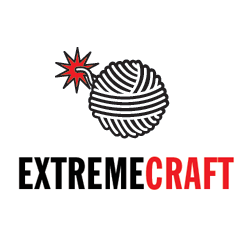The History of Creative Reuse
Garth Johnson is a studio artist, writer and educator who lives in Eureka, California. In addition to maintaining the website Extreme Craft (www.extremecraft.com) Garth’s writing has been featured in museum catalogs, magazines and books worldwide. His first book, 1000 Ideas for Creative Reuse was released in by Quarry/Rockport publishers and his DVD, ReVision: Recycled Crafts for Earth-Friendly Living was released by Eyekiss Films last year. His artwork has been exhibited nationally and internationally.
In the spirit of ideas worth spreading, TEDx is a program of local, self-organized events that bring people together to share a TED-like experience. At a TEDx event, TEDTalks video and live speakers combine to spark deep discussion and connection in a small group. These local, self-organized events are branded TEDx, where x = independently organized TED event. The TED Conference provides general guidance for the TEDx program, but individual TEDx events are self-organized.
Extremecraft, USA

PROFILE
Garth Johnson is a studio artist, writer and educator who lives in Eureka, California. Garth writes for CRAFT magazine, and his writing has been featured in museum catalogues, magazines and books worldwide. He has taught at Georgia State University and is currently an instructor at College of the Redwoods in Eureka. He is also a sought after lecturer and visiting artist.
Main Research Source
Some notes:
Recycling = the act of processing used or abandoned materials for use in creating new products.
Creative Reuse = the process of taking used or recycled materials and turning them into creative peices of art, home decoration or other useful items.
- Ancient Greek sculptures were made from bronze, many were melted down to make other sculptures, spears, helmets.
- In Ancient Egypt creatively reused monuments to build new monuments.
- The Romans reused amphora (made from ceramics – the 50 gallon drum/plastic bottle of its day – used to hold oil or liquids – not easily returned to be refilled) used in concrete structures, sarcophagus, urinal.
Damnatio Memoriae = removal from public remembrance. Sculptures were recarved.
Spolia = Spoils. The reuse of earlier building materials or decorative sculptures on new monuments. eg the Arch of Constantine.
“Everything that you reuse comes with it’s own story”.
- Islamic cultures eg Al-Aqsa mosque, Jerusalem – marble spolia left behind by crusaders
- Moghul dynastsy eg Qutb Minar, Delhi – minaret made of 27 different Hindu temples
- The Great Mosque of Córdoba, Spain – Roman temple, then Christian church, Islamic mosque with Christian basilica added.
- Middle ages – Roman jewellery reused eg Lowthair cross, Aachen, Germany and Herimann Cross, Germany
- Tibetan monks – Kapala = skull cup
As a culture/society we can’t hold a candle to the things that the World War II generations did just a few generations older than us. The amount of things that were recycled and reused are almost beyond our comprehesion. eg salvage drives, re-knit clothes
- The Deutscher Werkbund – a group of German designers who made kits for school children to teach good design and reused materials left over from the war and reused them into housewares. They made strainers from the filtes of gas masks, candles from gas mask filters, shell casing enamelled to make water and cooking pots, helmets into commodes.

